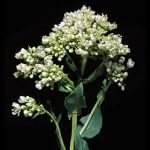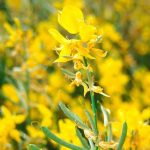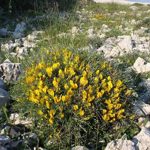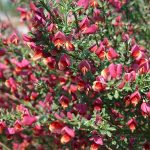For a comprehensive guide to all weeds of concern in Ada County, along with the recommended actions for their management, please reference the Noxious Weed Action Plan. If you are interested in learning more about the management of invasive species throughout all of Idaho, consider reviewing The Idaho Invasive Species Strategic Plan compiled by the Idaho State Department of Agriculture.
If you are in need of assistance for weed identification or control recommendations, please contact the Ada County Noxious Weed Control experts at (208) 577-4646.
Most Wanted Weeds
The following are the most prevalent and troublesome noxious weeds that have already naturalized in regions within Ada County:
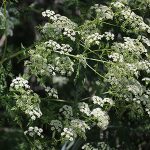 Poison Hemlock is commonly found in very wet areas of Ada County, particularly near leaking irrigation ditches and structures. Poison hemlock contains highly toxic alkaloids that are poisonous to livestock and humans if ingested.
Poison Hemlock is commonly found in very wet areas of Ada County, particularly near leaking irrigation ditches and structures. Poison hemlock contains highly toxic alkaloids that are poisonous to livestock and humans if ingested.
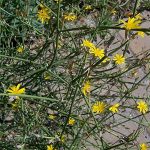 Rush Skeletonweed populations exist throughout Ada County, particularly in rangelands, semi-arid pastures, non-crop areas and rights-of-way. Primarily reproduces by airborne seed dispersal, and can spread from root fragments. Soil disturbance and fire aids in establishment.
Rush Skeletonweed populations exist throughout Ada County, particularly in rangelands, semi-arid pastures, non-crop areas and rights-of-way. Primarily reproduces by airborne seed dispersal, and can spread from root fragments. Soil disturbance and fire aids in establishment.
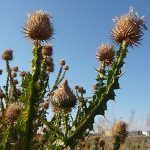 Scotch Thistle exists in scattered populations throughout Ada County and inhabits rangelands, dry pastures, rights-of-way, waste areas, as well as river, stream and canal banks. It prefers moist sites or drainages in dry locations. Scotch thistle can form tall, dense, impenetrable stands. Mowing is not effective, removal of roots is required.
Scotch Thistle exists in scattered populations throughout Ada County and inhabits rangelands, dry pastures, rights-of-way, waste areas, as well as river, stream and canal banks. It prefers moist sites or drainages in dry locations. Scotch thistle can form tall, dense, impenetrable stands. Mowing is not effective, removal of roots is required.
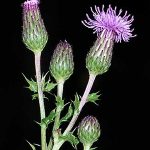 Canada Thistle exists throughout Ada County and inhabits waste areas, crops, pastures, rangeland and rights-of-way. It reproduces vegetatively by creeping roots, root fragments and seed. Canada thistle is a very aggressive weed that can form dense patches.
Canada Thistle exists throughout Ada County and inhabits waste areas, crops, pastures, rangeland and rights-of-way. It reproduces vegetatively by creeping roots, root fragments and seed. Canada thistle is a very aggressive weed that can form dense patches.
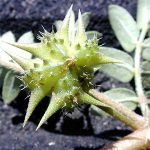 Puncturevine inhabits sandy, dry, or gravely sites. It fruits roughly circular with 10 spines, and mature burs can injure people and animals and puncture bicycle tires. They reproduce by seed. Puncturevine shall be removed from sidewalks and other high-traffic areas.
Puncturevine inhabits sandy, dry, or gravely sites. It fruits roughly circular with 10 spines, and mature burs can injure people and animals and puncture bicycle tires. They reproduce by seed. Puncturevine shall be removed from sidewalks and other high-traffic areas.
Early Detection/Rapid Response (EDRR) weeds are invasive plants that have been identified to be the greatest threat of potentially colonizing in Ada County. Idaho State Law requires that upon discovery of the plant species listed below in the initial stages of colonization, response to initiating eradication within the same season needs to occur.
Please notify Ada County Noxious Weed Control at (208) 577-4646 if you discover any of these plants:
The presence of any of the Broom genera below is prohibited in Idaho. If any of these prohibited genera are detected, notify ISDA Plant Inspections and the Idaho State Noxious Weed Coordinator (Idaho Invasive Species [toll-free] hotline: 1 (877) 336-8676).

